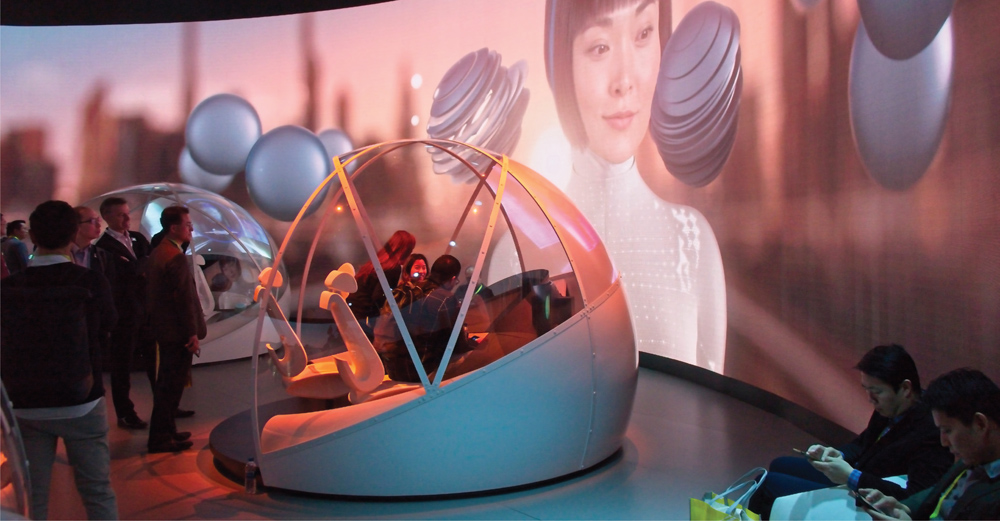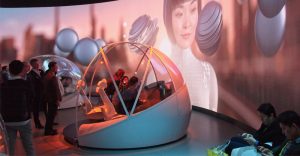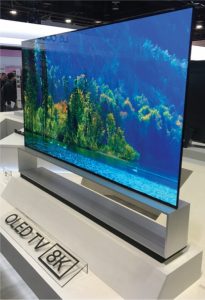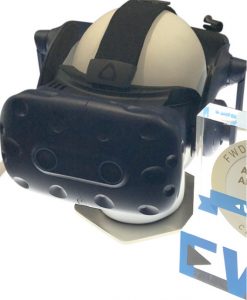Each year I wonder why I plan to attend the Consumer Electronics Show (CES) and put up with the other 180,000 attendees and endless lines throughout its host city of Las Vegas. Yet, each time I’m there, I think to myself, “Why didn’t I plan another day to experience the show and get even more inspired?”
This year’s show (Jan. 8-11) was easily the best I’ve witnessed, and in large part, it was due to the “start ups” section called Eureka Park. With 1160 reported companies exhibiting there (out of a total of roughly 4500), aisle after aisle of this hall was packed with innovative minds giving their take on how best to utilize technology to get closer to the consumer. Artificial Intelligence (AI) and 5G technology were most often used to wave the tech flag this year; close behind were smart sensors, self-driving cars and Virtual Reality (VR).
How, as a design community, could we not love the passion, inventiveness and vision dedicated to helping us create better design experiences, ones that arguably define our current conversations? I ran into three industry friends – a design firm executive, a retailer and a consultant – all of whom said being at CES was eye-opening and a critical part of their annual strategy to bring insights back to their clientele or projects. Yet, they all agreed that only a handful of our community were in attendance, as far too many are fooled by “consumer” in the show’s name. Yes, the show features products we’ll soon see at B&H, BT8 or Best Buy, but it’s so much more than that and highly relevant to retail designers, architects and suppliers.
Therefore, I’d like to share some key takeaways that will shape our conversations this year and beyond:
When it came to VR, the premium HTC Vive Pro VR headset once again showcased why it remains the leader for both price and ease of use. The big news at CES was the integration of Swedish tech company Tobii’s eye-tracking technology into a VR headset. This opens up a new level of immersive experiences, plus adds the ease of navigating menu functions with only your gaze. This will also have an impact on workplace collaboration and opens up many new possibilities with a minimal learning curve.
(In prior Next Store columns, I’ve mentioned the future of an untethered headset, and it’s here! Whether you select the Oculus Quest or the HTC Vive, we are finally freeing ourselves of the cord.)
Advertisement
Retailer Sleep Number was at the show to demonstrate its use of VR utilization and tell the story of its 360˚ Smart Bed experience. Attendees lined up to enter a VR simulation that illustrated the impact of sleep deprivation, while a consultant offered tips for better sleep – a great brand story.
Another fun use of VR was shown by Cybershoes, a Kickstarter brand that launched at CES. Place their product on your shoes and all of a sudden you’re walking through a virtual environment.
JD.com also made news with its AR fitting room and Styling Station. I was impressed by the idea that an online powerhouse wanted to use mirrors in traditional environments to foster beauty and apparel purchases. This is a powerful way for all merchants to expand their footprint by using this simple concept to bring their brand into new venues.
Digital displays were another highlight of this year’s event, and their form factor is the biggest news to share. Flexible screens in traditional 16:9 frame sets are officially done. This is great news for the creative industry, quite frankly, and the emerging curved designs are a welcome addition to our environments.
LG’s “The Massive Curve of Nature,” a wave-shaped array of flexible OLED screens displaying compelling nature-based content, was a show-stopper to be certain. The scale alone made even the savviest attendees stand in place and gawk. LG also showcased a flexible display that automatically rolls up into a piece of furniture. The possibilities for the store fixture industry are endless with this technology. Imagine feature tables that sense your presence and unfurl a razor-thin OLED screen to present associated content generated by your position in relation to the display.
It wasn’t just about the “big screens,” either. Micro-displays will have a major impact on bringing big-screen TV tech into wearable displays from Syndiant and others. The possibilities this technology opens up as we take our clients into a mixed-reality environment to show our work, portfolio and concepts, is limitless. Make note that this is the beginning of the end of “screens” as we know them today.
Advertisement
Chinese manufacturer Changhong stole the show with its CHiQ series for its Artist TV range. These were some of the most inspiring screens I’ve ever seen. In retail, this is a good example of how screens can be better incorporated with fixtures so we can move away from the institutional look most form factors offer today.
CES made the move away from calling itself strictly a “consumer” show for a reason. As technology continues to drive what makes a “next store,” we as an industry have no choice but to embrace being amongst the 180,000-plus attendees who make the pilgrimage to Vegas every January. I hope to see you there in 2020!


 Photo Gallery3 days ago
Photo Gallery3 days ago
 Headlines1 week ago
Headlines1 week ago
 Sector Spotlight2 weeks ago
Sector Spotlight2 weeks ago
 Headlines1 week ago
Headlines1 week ago
 Headlines4 days ago
Headlines4 days ago
 Headlines2 weeks ago
Headlines2 weeks ago
 Designer Dozen1 week ago
Designer Dozen1 week ago
 Headlines2 days ago
Headlines2 days ago



















